WALDMEISTER
Hidden treasures – Chemnitz in the cycle of time
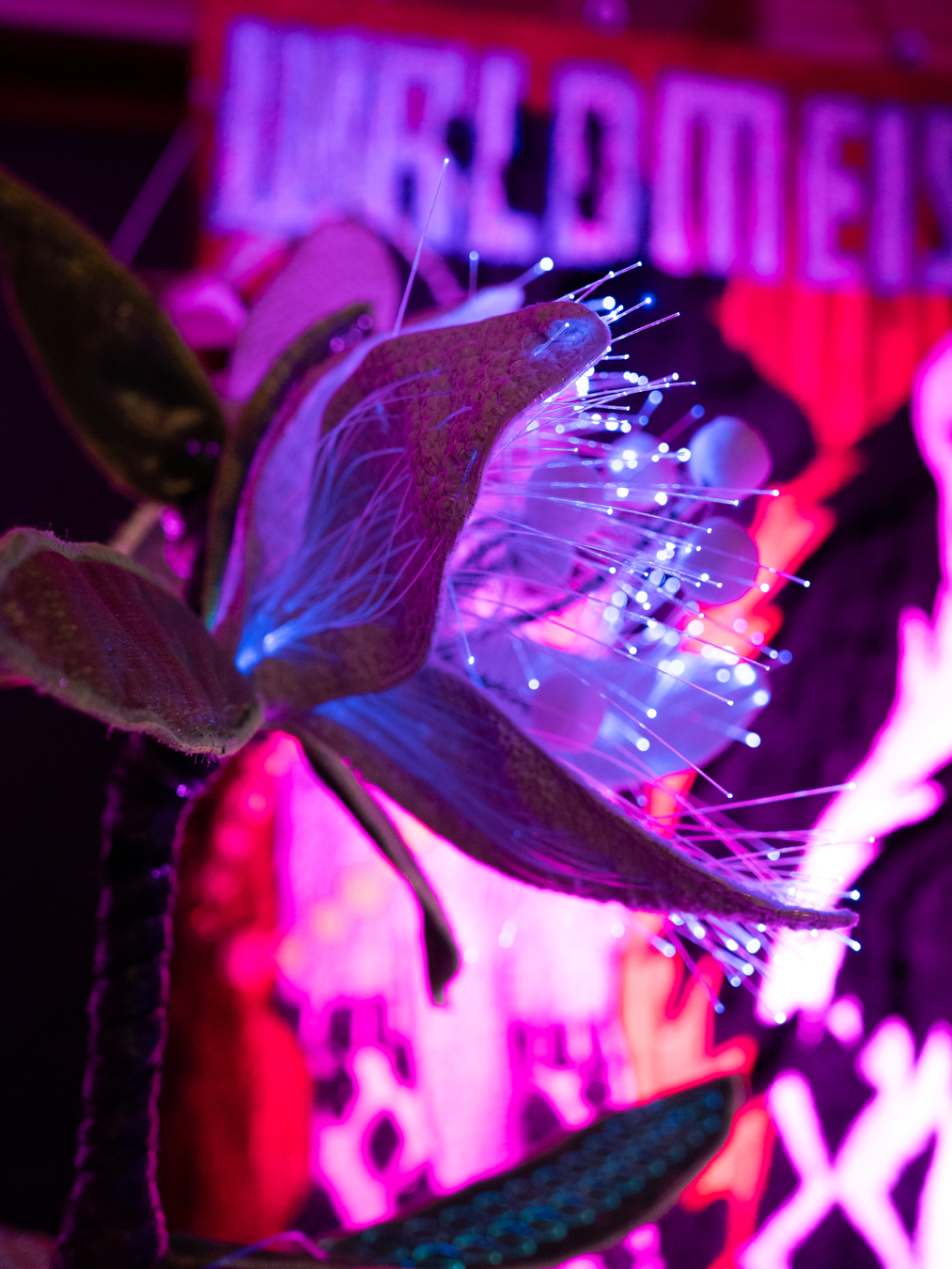

Participants
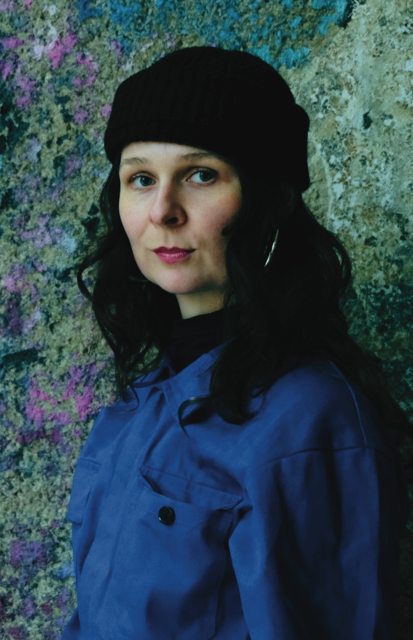
(c) Wenke Sommer
Wenke Sommer
Wiete Sommer is a designer and curator. She combines design, art, science and business with an anthropological perspective. In large collaborative projects – often with performative, fashion or film elements – she develops themes such as New Work, gender and social and ecological sustainability.
She was supported in this work by Anita Richter, Ines and Wenke Sommer.
X
Saxon Textile Research Institute e.V.
The STFI has been a non-profit research institute in Chemnitz since 1992. It focuses on technical textiles, lightweight textile construction, functionalisation, digitalisation and recycling. As a strong institution for applied research, the institute works on textile sustainability as well as resource-efficient and energy-optimised processes.
X
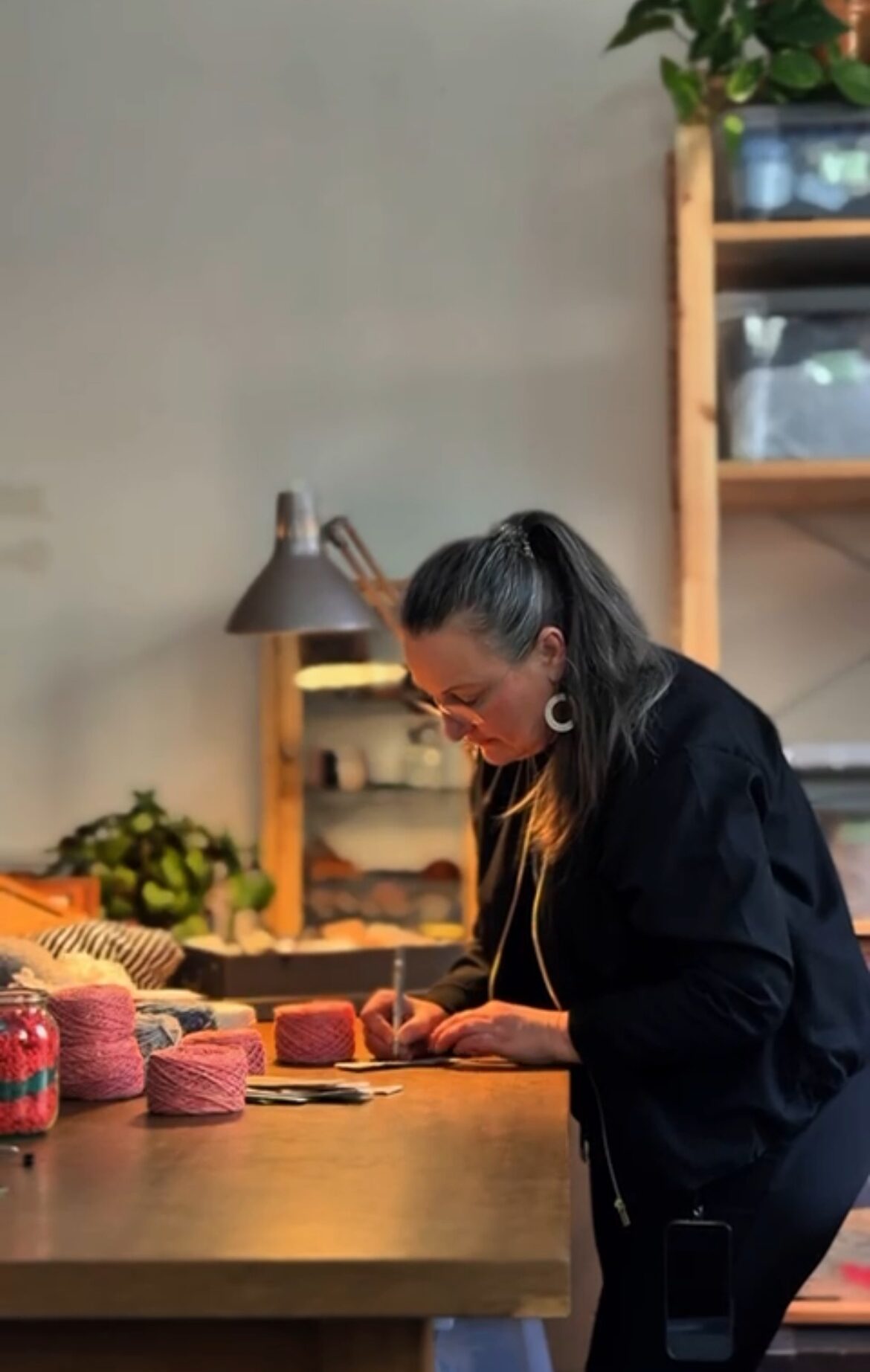
(c) Ina Goetz
Undoyarn
Ina Goetz
Ina Goetz is the founder of UNDOYARN, a sustainable project from Chemnitz that reuses yarns from used knitwear – with the aim of consciously utilising resources and creating spaces for shared learning and creative experimentation.
X
The EscheLab
The EscheLab is a workshop for creative textile work – with a focus on knitting, embroidery and clothing. It also offers space for encounters and exchange.
The result of artistic and technological collaboration – WALDMEISTER – Hidden treasures – Chemnitz in the cycle of time
“I want to make visible a Chemnitz that is often overlooked – a Chemnitz that is reinventing itself: from what was, with what is. I hear the rattling of textile machines, see traces of the car industry that once characterised the cityscape. What has remained? What is emerging from it?
I set off in search of clues: to the STFI, where research is being conducted into the materials of the future, to the Esche Lab, which keeps history alive. I meet Ina Götz from UNDOYARN, who unravels old woollen jumpers and feeds the yarn into a new cycle. These places, people and ideas are new chapters for me – descendants of the former industry, the silent pulse of the city.
Myths also find a place here: for example, the legend of the black poodle with the red eyes that guarded ores deep beneath the city – an inspiration for Goethe’s Mephistopheles. Such stories live on in my work: as part of an idea of Chemnitz as a city full of depth, magic and hidden treasures.
At the centre of my work is also the woodruff – a delicate, native plant that symbolises community, conviviality and circulation for me. I think of late summer evenings by the fire, of bonding conversations. For me, woodruff has come to symbolise what happens when science, business, art and design come together.”
– Wiete Sommer
Material
Carpet/ salvaged wool, virgin wool, acrylic wool/ tufted, light object/ textile, fibre optics, brass/ embroidered, sewn/ crocheted, seating object/ textile offcuts/ kemafiled
Photographs: (c) Michele Scognamillo
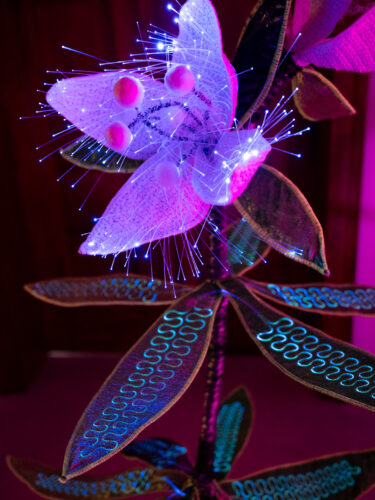

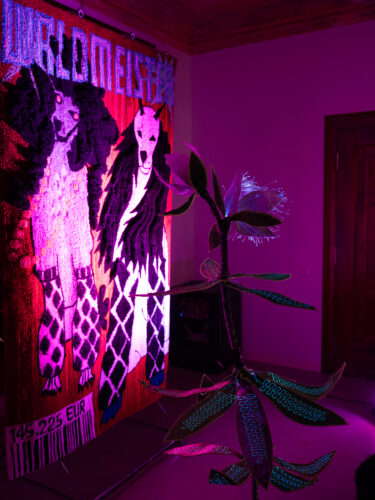
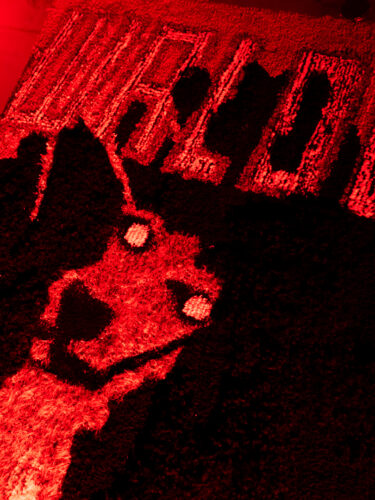
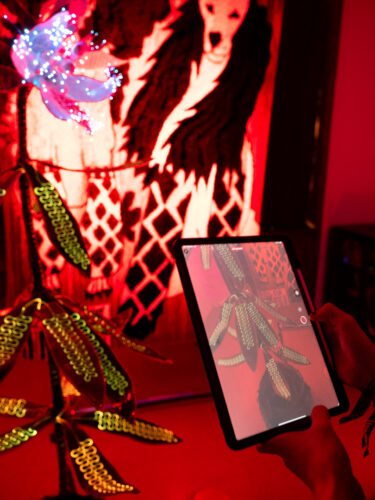

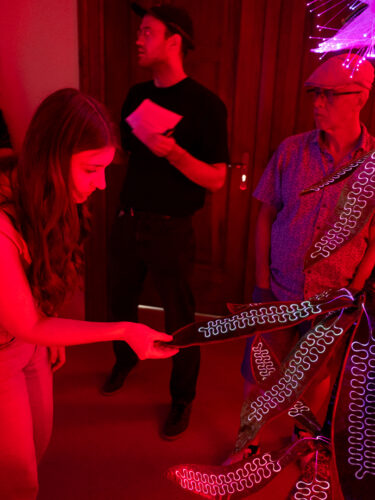

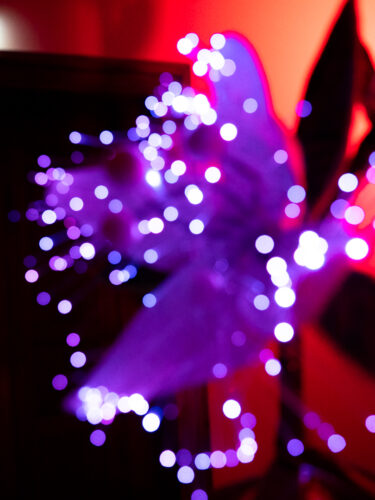


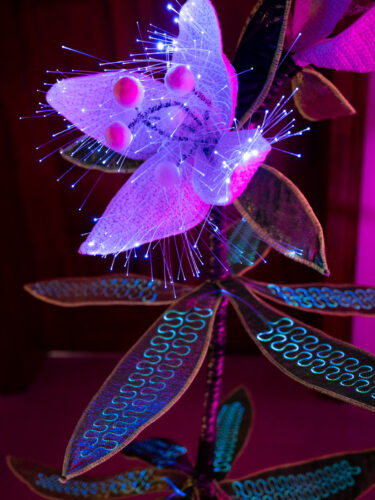


Backgrounds
The starting point of this exhibition is a subtle irony: a collaboration of protagonists who deal with the visible – with fabric, texture and textile expression – focuses on the visibility of their own organisations. In the context of Chemnitz’s rich textile tradition, they pose the question: How can individual specialisations be bundled in order to generate greater attention together? What traces do collective actions, shared techniques and decisions leave behind?
Visibility is not only negotiated here as a question of surface, but as an expression of a common attitude – as a search for form, public presence and historical localisation. The work addresses the viewer’s need for recognisability by simultaneously offering itself as a backdrop for digital self-staging. In this way, the visitors themselves become part of a collective process that began with an initial meeting in the EscheLab, builds on the neatly separated – and thus rescued – wool of Undoyarn, is supported by the knowledge of Elke Thiele and the STFI and takes shape through the hands of Wiete Sommer. Finally, an old story of Chemnitz is told anew.





